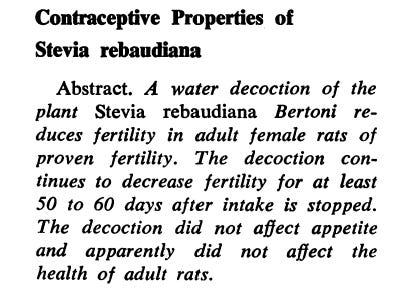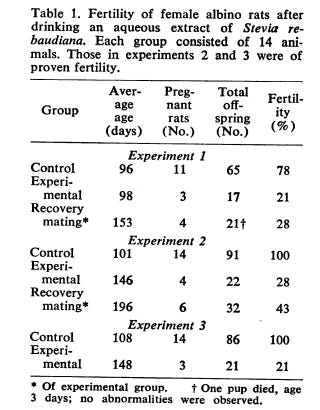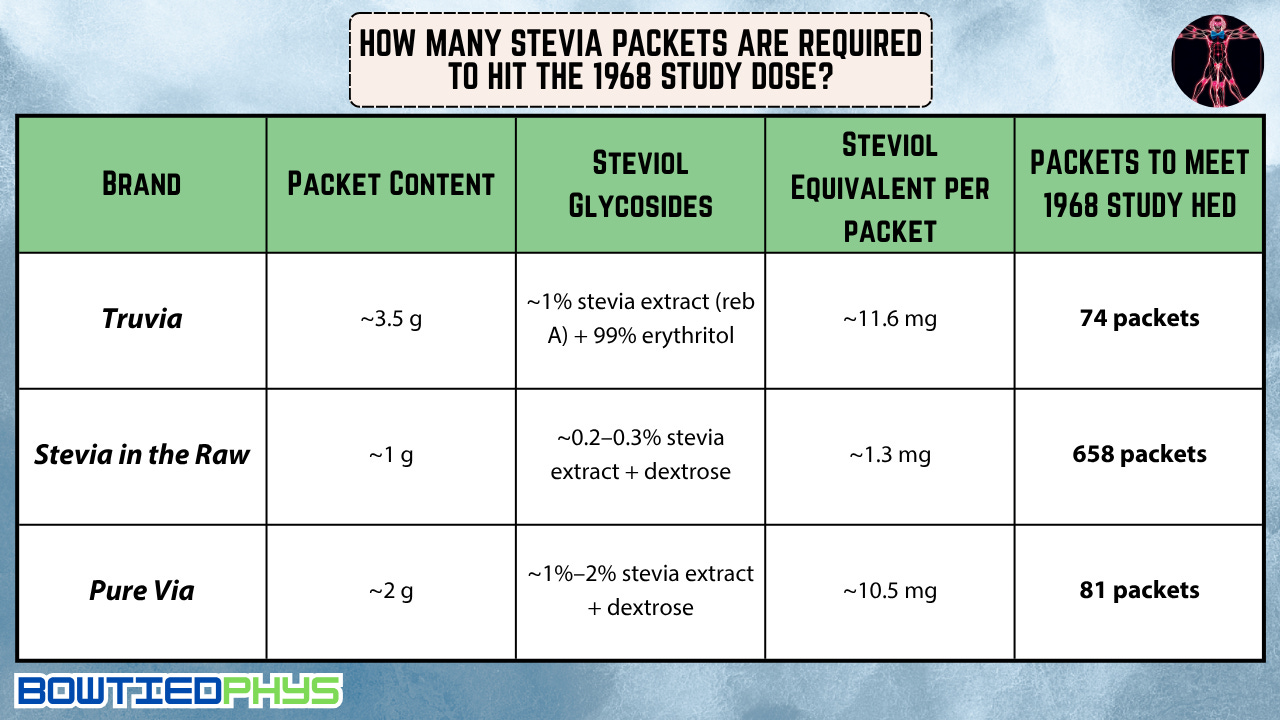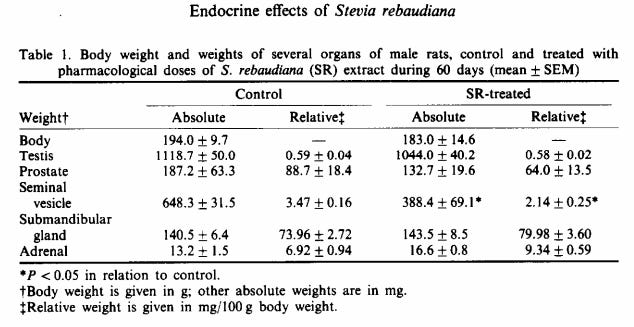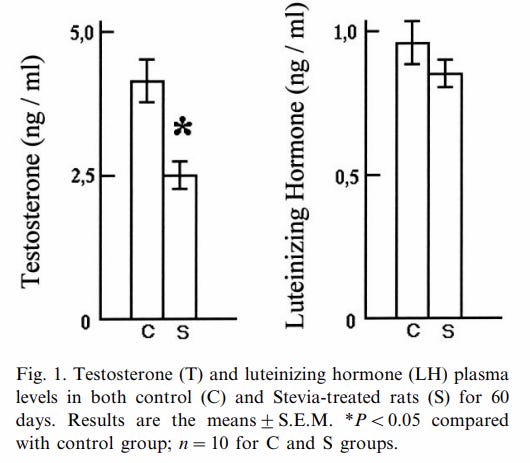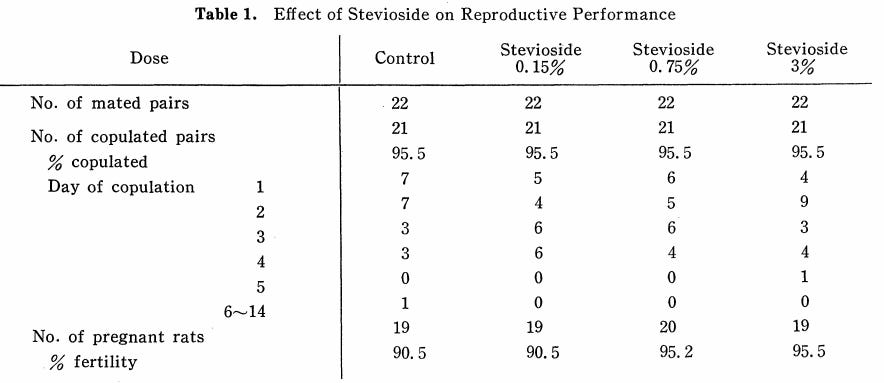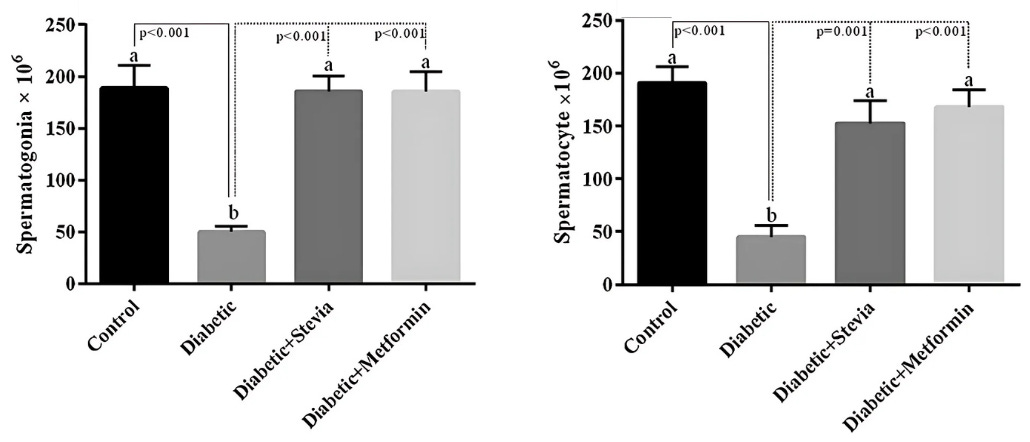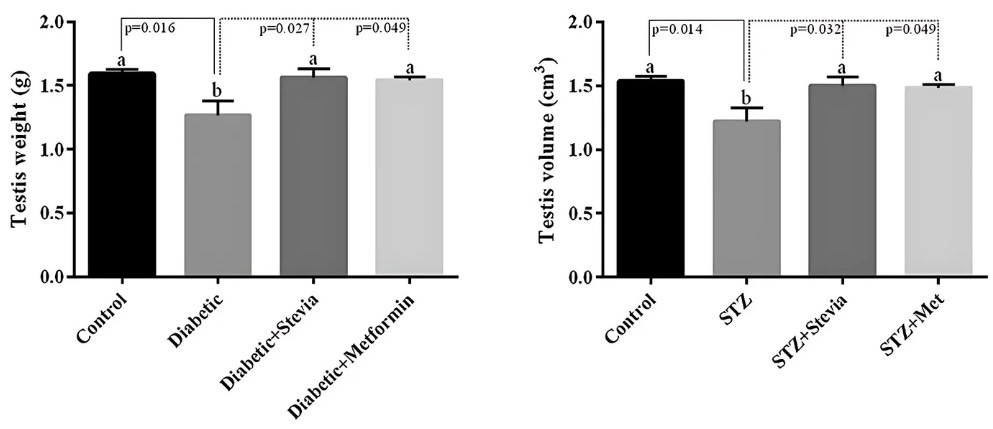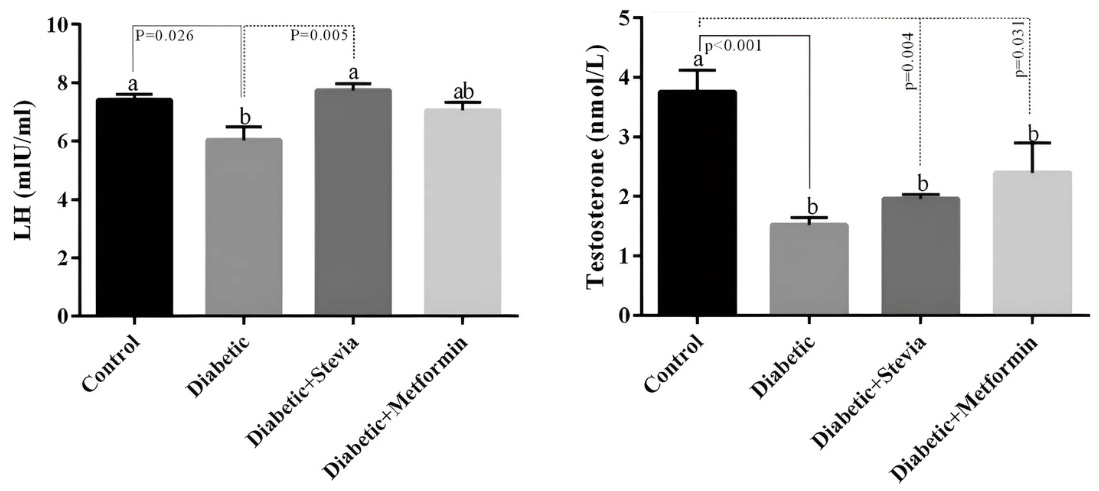Stevia: An Oral Contraceptive?
Unpacking the truth about the natural sweetener
The popular natural sweetener Stevia is a form of birth control. Or is it?
Over the past month, the 1968 study has been circulating on the contraceptive effects of Stevia. Yes - the same sweetener most have been consuming in one form or another for decades now.
Concerning. Especially given its widespread use in everyday food & drink products today. Many of which we’d otherwise deem generally healthy.
Research article abstracts are great - but it’s time to take a look at the actual content of this study and several others reporting on Stevia’s impact on fertility & reproductive function.
The Original Study
The controversial study referenced above dates back to 1968 research conducted by Planas & Kuć. The authors begin their study with a bold assertion:
“The decoction continues to decrease fertility for at least 50 to 60 days after intake is stopped…Paraguayan Matto Grosso Indian tribes use Stevia rebaudiana as an oral contraceptive.”
The two biochemistry researchers ran three separate experiments with virgin and proven-fertile rats receiving 5% aqueous Stevia rebaudiana solution. Rats that got the solution experienced a 57% to 79% reduction in fertility with suppressed fertility persisting 50 - 60 days post-treatment.
What much of the social media buzz fails to explain are some of the flaws in the study design.
Debunking the 1968 Stevia-Contraceptive Study
Flaw #1: Lack of Isolation of Active Stevia Compound
There’s a significant difference between whole stevia leaves (what was administered in the study) & purified steviol glycosides (what’s in food products for our own consumption).
Crude whole-plant stevia extracts contain hundreds of unknown compounds. Whereas stevia in a purified form removes toxic compounds that might be present in the whole plant. The sweet compounds we typically associate with a food product Stevia include Stevioside & Rebaudioside A, which only make up 10% & 4% of the entire plant, respectively.
This of course makes it impossible to attribute the potentially contraceptive impacts to the Stevioside or Rebaudioside A compounds alone.
Flaw #2: Absent of Proper Statistical Analysis
Bear with me on the nerd talk for a minute.
But notice anything missing about our results from the original paper?
Proper statistical analysis
No p-values.
No confidence intervals.
No tests of significance.
These statistical concepts allow us to determine if differences between treatment and control groups are real (“statistically significant”) or simply due to random variation. Instead, we’re left with an assumption of Stevia’s independent impact on fertility rates in this case.
Flaw #3: Extreme Dosage Levels
*takes deep breath before math’ing*
Let’s break down just how extreme the dosing really was.
The rats were administered 10 mL of a 5% Stevia solution daily equating to 50 mg/mL. Since the average weight of the rats studied was ~250 g, we convert to obtain a rat dose in mg/kg/day:
To account for metabolic differences, we convert the rat dose to a human equivalent dose (HED) using the following formula:
Now let’s calculate the equivalent total dried leaf intake for an 80 kg (~175 lb) human:
Lastly we apply a couple additional assumptions:
Study HED Target:
Dried leaf ≈ 10% steviol glycosides → 2,590 mg steviol glycosides/day
Steviol glycosides × 0.33 = 855 mg steviol equivalents/day
Steviol Equivalent Conversion:
Rebaudioside A: 1 mg = ~0.33 mg steviol equivalent
Stevioside: 1 mg = ~0.40 mg steviol equivalent
Most packets use Reb A, so we use 0.33
Finally we can scale this to conclude how many major brand Stevia packets we need to meet the HED of the 1968 study:
At a minimum, this dosing equates to 74 Truvia packets for a 175 lb man.
Flaw #4: Isolation of Male Rats
In a 2003 study on the long-term fertility impacts of stevia, Gil et al. cautions of an overlooked aspect of prior trials:
“Other authors have studied the effect of S. rebaudiana on male rats, designing the research with male rats isolated (Melis, 1999, Oliveira Filho et al, 1989; we work with pairs of mice because rodents live with a partner from weaning, and the isolation of male can affect his fertility.”
Replication Attempts of Original Study
In the last half century, multiple attempts were made to reproduce the original study. However, only two other studies were able to identify mild fertility or reproductive dysfunction. Still both fell victim to Flaws #1 & #3 - using crude stevia leaves at supraphysiologic doses:
Olivereira Filho, 1989 → Young male rats given stevia extract for 60 days showed only one change: seminal vesicle weight dropped 60%. All other reproductive markers (testosterone, organ weights, sperm parameters) remained normal suggesting no meaningful impact on male fertility.
Melis, 1999 → 20 rats given high-dose crude stevia extract (equivalent to ~138g daily for an 175 lb human) for 60 days showed reduced reproductive organ weights, lower testosterone, and decreased sperm concentration.
Up until today, all other evidence we’ve uncovered supports stevia’s safety related to fertility & reproductive function in its pure forms:
Curry & Roberts, 2008 → The most robust study to date on the relationship between stevia & fertility/reproductive health. A two-generation reproductive toxicity study using Han-Wistar rats reported no significant impact of purified rebaudioside A on:
✔️ Mating performance & fertility
✔️ Pregnancy duration
✔️ Sperm production & motility
Yodyingyuad & Bunyawong, 1991 → Another multi-generational study gave hamsters high doses of stevioside (up to 2.5 g/kg daily) for three generations. The treatment had no negative effects on growth, mating, pregnancy, or offspring in any generation.
Gil, 2008 → 120-day study concluded stevia extract consumption at concentrations of 3.75 & 7.5 g/kg did not affect fertility in mice.
Mori, 1981 → When male rats received treatment of 100-2400 mg/kg (20-400x higher than the acceptable daily intake) for 60 days prior to mating, no adverse effects on reproductive parameters or fetal development manifested.
Usami, 1995 → Pregnant rats given up to 1,000 mg/kg of pure stevioside daily showed no birth defects or toxicity in mothers or offspring.
Aze, 1991 → Rats fed 5% stevioside for 13 weeks survived with normal weight gain & food intake. The study concluded 5% stevioside in the diet was safe enough to use as the highest dose in a 2-year cancer study.
Sincholle & Marrcorelles, 1989 → Male rats given stevia leaf extract (10 mL/kg daily for 31 days) showed no anti-androgenic effects.
In three separate cases, stevia in its pure form Stevia rebaudiana even showed beneficial impacts across multiple fertility & reproductive biomarkers:
Gholizadeh, 2019 → The researchers concluded stevia plays a role in diminishing diabetes-associated reproductive problems and infertility in males. Shown by diabetic rats given stevia extracts demonstrating increased:
✔️ Spermatogenesis
✔️ Testicular volume
✔️ LH & testosterone
Abdi, 2023 → Diabetic male mice given Stevia extract (400 mg/kg) showed improved testosterone levels, better sperm quality, higher IVF success rates, & enhanced embryo development compared to untreated diabetic mice.
Hanna, 2023 → Male rats given the food dye tartrazine showed reduced testosterone, poor sperm quality, & testicular damage from oxidative stress. When stevia extract was co-administered, it protected against harmful effects by boosting antioxidant defenses, maintaining normal testosterone levels, & preserving sperm quality/testicular health.
Sure - this article sought to clarify some of the misconceptions about stevia. But there’s a deeper lesson. If there’s one thing you should take away, it’s this: pause and assess before you blindly accept an audacious headline as truth. In the era of the 24-millisecond news & social media cycle, there’s a strong System 1 nudge toward believing the sensational alarmism. And an equally strong premium being rewarded for this content as well. Of course our evolutionary biology has wired us to prioritize potential threats, but when unchecked in the sea of slop, it morphs us into anxious curators of panicanism instead of critical evaluators of fact.
If you haven’t already, reminder to subscribe below. Every little bit makes an impact in the fight against the rampant growth of the reductionist AI/mainstream slop we're seeing. (We’re going to win.) And it’s why we’re running the Anti-Slop Summer Sale™ before we roll out more premium content.
Stay after it & we’ll see you next week.
Your friend,
Phys
***Disclaimer: The information provided by BowTiedPhys is for educational purposes only. This content is not intended to be a substitute for professional medical advice, diagnosis, or treatment of any kind. BowTiedPhys is not a licensed medical provider. Prior to making any changes to your health protocols, consult a licensed healthcare professional. Some of the links in this post may be affiliate links - BowTiedPhys may earn a commission at no additional cost to you. This commission helps support our work and allows us to continue providing valuable content to our valued subscription members.***



